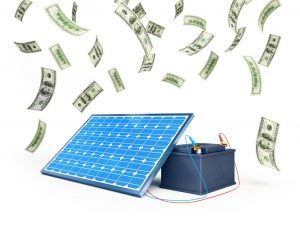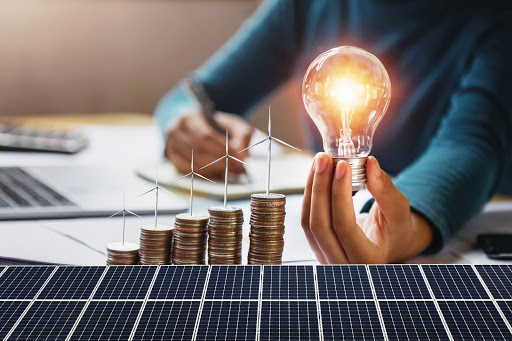The size of a solar energy system depends on a number of factors. The size of your home, the direction and angle of your roof, and the amount of energy that you consumed in the last year. When you call Aurora Energy, we’ll set you up with a solar consultant. They’ve seen it all and can tell you what you need based on your goals.
The Energy of One Solar Panel
One solar panel is made up of multiple cells. During peak hours your solar panels will be exposed to the maximum amount of sun possible. Typically, a panel can produce about 320 watts of electricity. We’ll dial that back to 300 for example purposes. If there were four hours of peak sun per day then that one panel would produce about 1.2 kilowatt-hours of electricity per day. It’ll generate power all day long but since the output is drastically reduced on cloudy days it evens out. That 1.2-kilowatt-hour average is a good measuring point.
Monthly Output
A typical house uses about 900 kilowatt-hours of power every single month. Of course, you might use a little more or less depending on how energy-efficient your home is. If one panel creates 300 watts of energy and gets 8 hours of sunlight each day, then in the course of a 30 day month it will produce 72 kilowatt-hours of energy (300 watts x 8 hours x 30 days = 72,000 watt/hours). In order to reach the goal of 900 kilowatt-hours, your home will need approximately 13 panels. Things like the angle of your roof, how far north your property sits, and how much shading is on your roof all affect the output of individual panels.
Going Further
There are a lot of things that you can do to push those numbers toward being more energy-efficient. You can swap all of your light bulbs to LEDs that use less power. Adjust your thermostat by a few 72 degrees, and check all the insulation and doorways for leaks. With those precautions, you can bring your energy consumption down. The power produced by your system will go further and save you more money.
There is one person that knows exactly how many solar panels that you’ll need to operate your household. It’s the solar consultant that we’ll send to your home to assess your property and design a solar energy system to meet your needs. You can make that appointment by calling us right now.
We’ve been helping people all over the state for years save hundreds, or even thousands, of dollars on their power bill. If you’d like to hear from some of them, take a look at our Facebook page. And then let us take your home to the next level!




